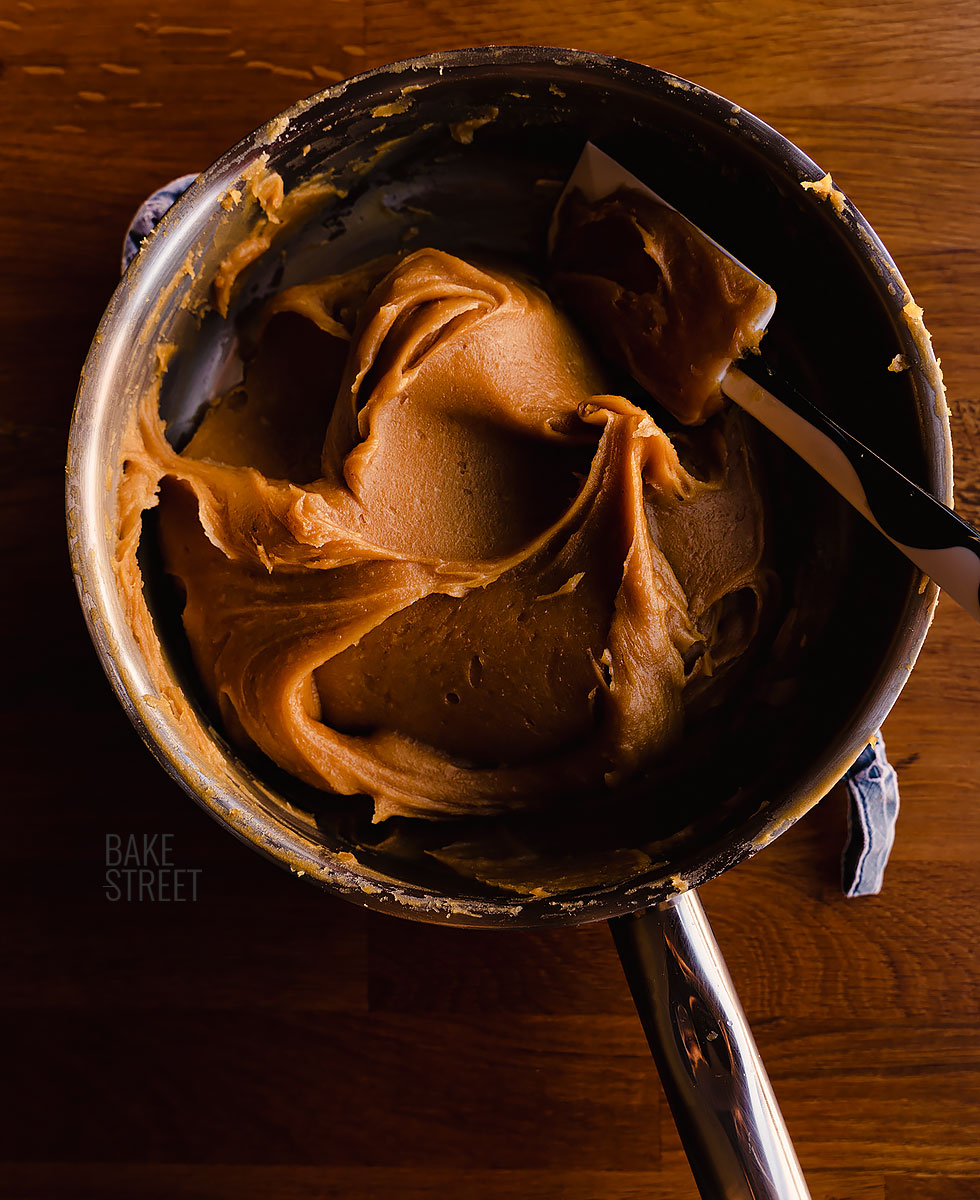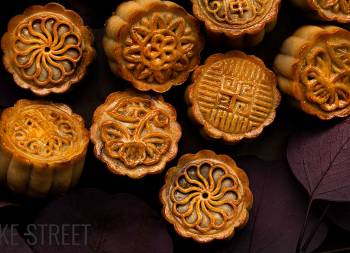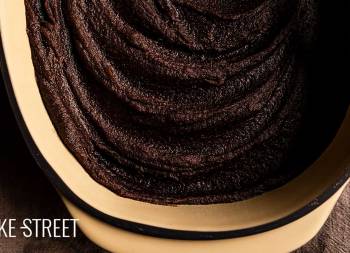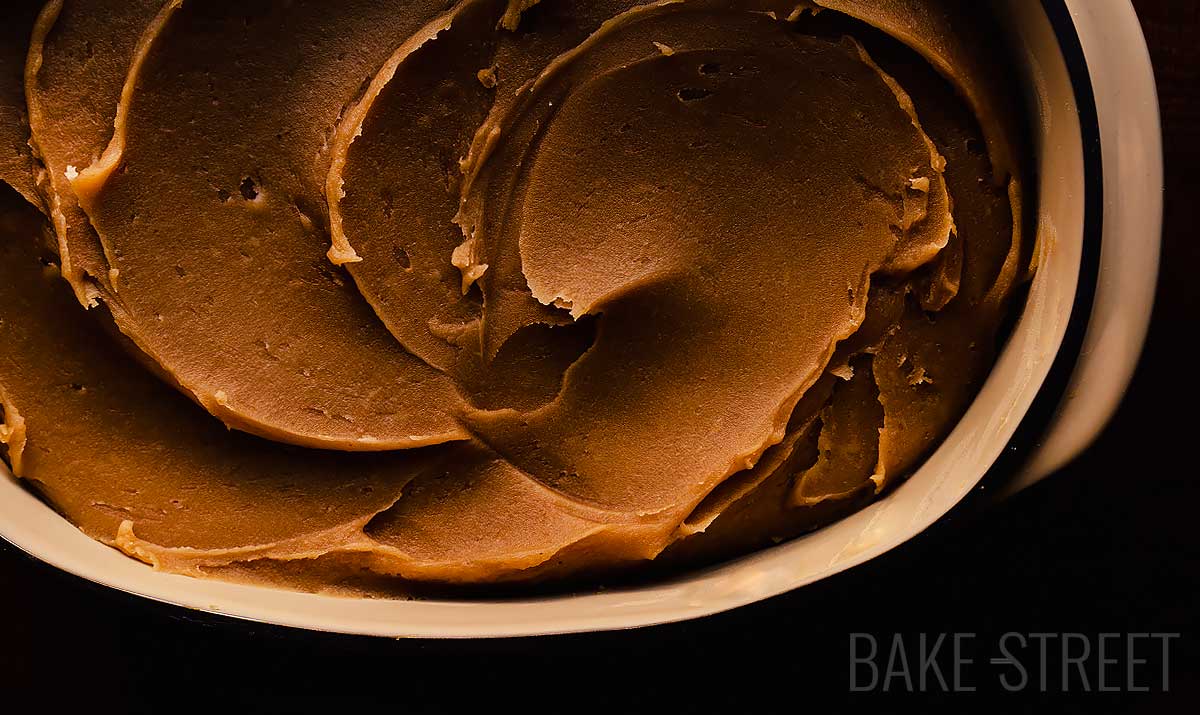
How to make lotus seed paste – Lian Rong
Ever since I made the anko-filled Mooncakes last year, I’ve been eager to share with you how to make lotus paste or Lian Rong (莲蓉). Last year I was a bit too short to share it and this year you could say that too! I was confident because of the dates and when I checked when the Mid-Autumn festival was being held, I saw that this year it started on September 10th.
Still, I want to leave you with the process so that you can cheer up with it. Not only to make mooncakes, but also to use it as a filling for other elaborations. For my part I will leave you some more because I have prepared quite a lot …. And, I’m not going to deceive you, it is spectacular! The flavor and texture is difficult to explain since I can’t find anything to compare it with.
Its texture is smooth and velvety, and when you taste it, you can be sure that it is made with some kind of legume. The aroma and flavor is wonderful, sweet and delicate. It is an elaboration that is well worth preparing and tasting.
Lotus flower.
The lotus flower, also known as sacred lotus, Indian lotus or Nile rose, is the common name of an aquatic plant called Nelumbo nucifera, characterized by floating and fragrant leaves, as well as a fruit of complex structure with multiple holes that resemble small eyes. One of its most striking and surprising characteristics is the longevity of its seeds, since they can germinate after ten centuries.
It is considered a symbol in many cultures. In Buddhism, the lotus flower represents purity and spiritual awakening. The muddy water that protects the plant is associated with feelings ofattachment and carnal desires, and the immaculate flower blooming in the water, in search of light, is the promise of purity and spiritual elevation.
Symbolically, the lotus flower is associated with the figure of Buddha and his teachings, which is why it is a sacred plant for the people of the East. Legend has it that when the child Buddha took his first steps, lotus flowers grew everywhere he went.
In traditional Chinese medicine, every part, including the seed, which is also known as lotus nut, is used for healing purposes. Therefore, in this culture, it is a symbol of health and harmony.
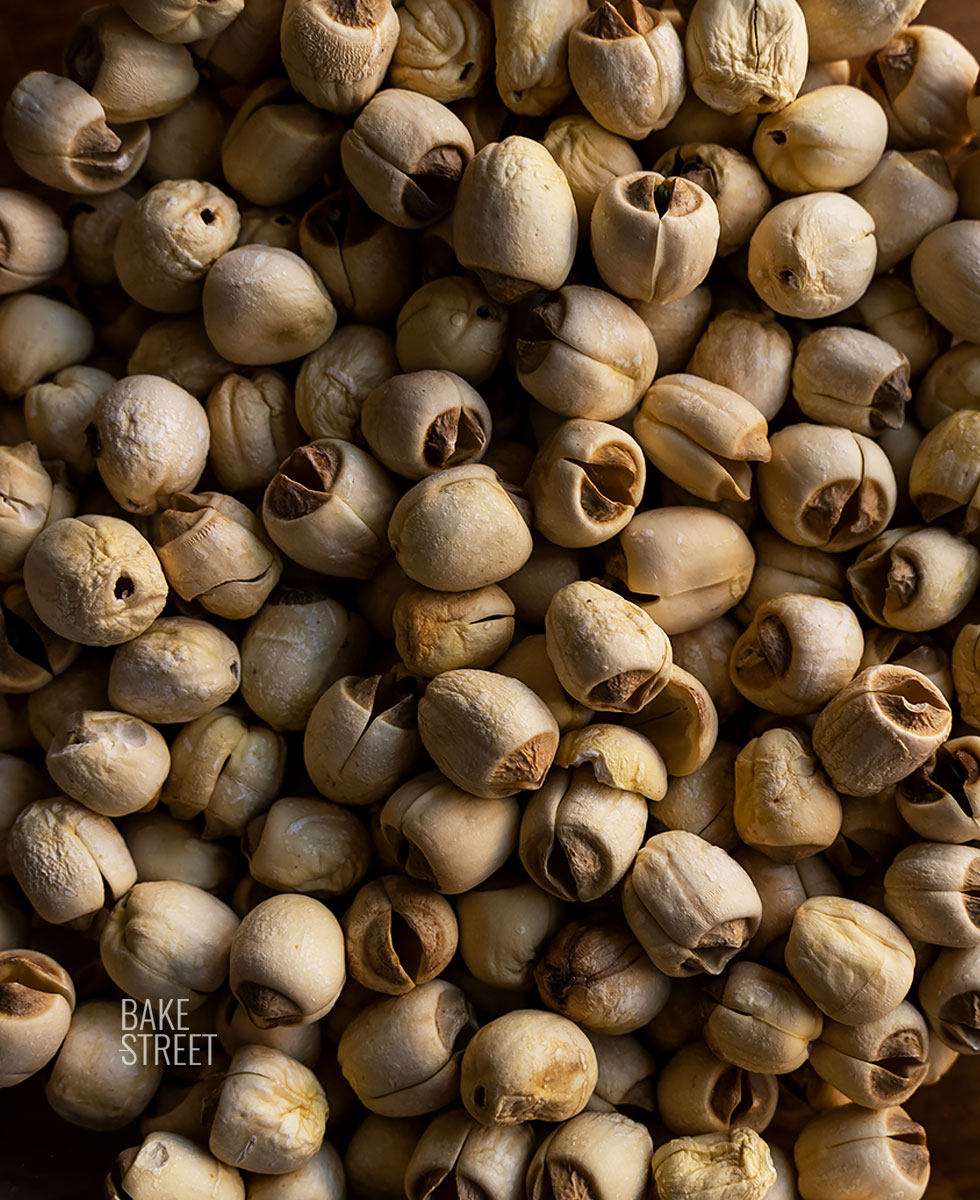
Lotus flower is also considered a sacred plant in Indian, Egyptian and Japanese cultures.
In some of them, the lotus plant symbolizes values such as fertility, rebirth, spirituality and enlightenment.
For example, in ancient Egypt, along with the dung beetle, the phoenix and the sun itself (Ra), the lotus flower represents resurrection as it emerges from the deep waters.
In India the lotus is called padma in Sanskrit. The main gods and goddesses were born in padmas or lotuses. The Hindu padma is often used as a model to create mandalas or to align the chakras. In China, Japan and places with Buddhist traditions, a characteristic ritual prayer mentions the lotus: om mani padme hum. It is probably the most famous mantra in Buddhism.
Lotus flower has the ability to survive in difficult environments, such as swampy areas, hence it is often associated with the complex processes that humans have to face.
Aside from its countless symbolic meanings, the nutritional benefits of lotus seeds are very noteworthy aspects that make this plant so highly prized. Inside the plant are the lotus seeds, also known as lotus nut, and it is this part of the plant that is associated with health benefits.
What are lotus seeds?
Lotus seeds, also known as lotus nuts, are the seeds of the lotus plant Nelumbo nucifera.
Both the lotus plant and its seeds are commonly consumed and used for medicinal purposes in many Asian countries. Its popularity is growing in places such as Australia and America.
According to a June 2016 study published in Frontiers in Plant Science, the entire lotus plant is edible, but the benefits of lotus seeds are especially notable. This study states that lotus seeds are known for their flavonoid and alkaloid content. These metabolites are capable of exerting antioxidant, antiamnesic, anti-inflammatory and antitumor activities. They possess significant inhibitory effects on cancer cells in both human and animal models. Their findings also revealed an enhanced immune response in mice with tumors. The researchers believe that lotus seeds may be useful in controlling cancerous tumors.
Unlike other types of seeds, they do not have significant sources of fatty acids like other nuts. However, they do contain a higher percentage of carbohydrates and protein.
A November 2016 study published in the Chinese Journal of Natural Medicines found that alkaloids in lotus seeds could reduce blood pressure in hypertensive mice. The results are comparable to drugs used to treat hypertension.
Lotus seed paste – Lian Rong.
Lotus paste is one of the most common fillings for sweet preparations in Chinese confectionery and is considered a luxury product. It is made with lotus seeds, previously cooked and crushed, sugar, oil and maltose. When preparing it, you can either add the sugar directly or make a caramel in which we then add our puree or cream made with the lotus seeds.
I advise you to do it the way I show you in the post, because not only we will obtain a lotus paste with a golden color but also it will have those particular nuances of the caramel; flavor and aroma.
It is important to be very patient during the whole process of elaboration, since this is where the success of our lotus paste lies. It is possible that unless you have near the area where you live markets or Asian stores, it may be a little difficult to find some products. Although we can always look for them online and find them at good prices.
A bit about maltose.
Maltose, also known as maltobiose or malt sugar, is a disaccharide formed from two glucose units connected by an α (1 → 4) bond. In isomeric isomaltose, the two glucose molecules are linked by an α (1 → 6) bond. It is naturally one of the main products of the enzymatic hydrolysis of amylose, which is a glucose homopolysaccharide present in starch. An example of this reaction can be found in the germination of seeds, hence its name malt. Unlike sucrose, it is a reducing sugar.
- Maltose is obtained industrially from the hydrolysis of starch, but it is a natural intermediate product of the digestion process.
- Sweet potatoes and some types of wheat are rich in maltose in its “free” state.
- Malt syrup and other syrups, such as corn syrup, are rich in maltose.
- Some beers, ciders and other “malt” beverages have a moderate maltose content, which is metabolized during alcoholic fermentation.
- Many industrially processed cereals, jams, candies, confectionery and chocolates are also high in maltose.
Now let’s see how to prepare this lotus paste 😉
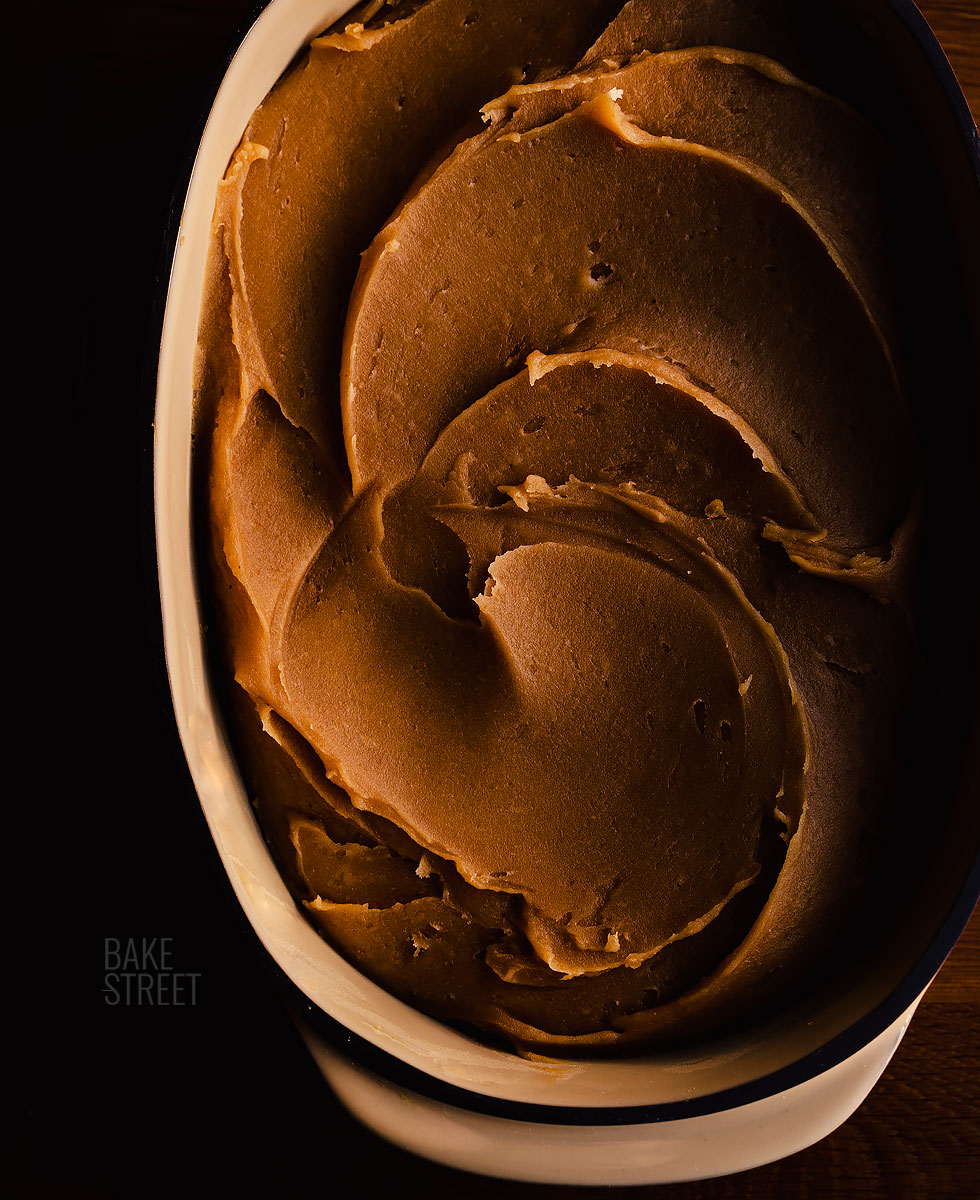
Recipe lotus seed paste - Lian Rong
I followed the recipe from Huang Kitchen
Ingredients for, about, 1 kg lotus paste
- 350 g lotus seeds
- 240 g vegetable oil, in my case I used sunflower oil
- 300 g sugar
- 36 g maltose
- 1 teaspoon alkaline water (optional, recommended if we use lotus seeds with brown skin).
MATERIAL WE WILL NEED:
- large pot
- strainer
- large frying pan with bottom
- silicone spatula
- whisk
- recipient or bowl to store the lotus paste
Instructions
Prepare lotus seeds.
- Fill a large pot with water and place over high heat, bring to a boil.
- Once it comes to a boil, add the alkaline water along with the lotus seeds. Cook for 5 minutes.
- Remove from the heat and reserve a few ladles of cooking water.
- Pour over a strainer.
- Rinse very well under cold running water.
- Set aside until we can handle them with our hands without burning ourselves.
Clean and blend lotus seeds.
- Open lotus seeds and remove green stem. Not all seeds will have it, but most of them will.
In my case, the seeds came without a brown outer skin that covers them. In case yours do have it, remove them by rinsing them under running water. - Prepare a large pot with water and add the cleaned lotus seeds. The water should cover the seeds and have 1 finger of water above them.

- Once it comes to a boil, cook over medium heat for 1 hour. To know if the seeds are cooked, we will only have to take one and crush it with a fork or spoon. If it is soft, they are ready. Otherwise, we will prolong a little more the cooking.
- We must observe that during the cooking, at no time, the seeds run out of water.
- Add lotus seeds in a food processor along with some cooking water.
- Blend until a smooth and silky paste is obtained. We should observe the consistency of the lotus seed puree to assess whether we should add more water. If the paste is too dense, it will be difficult to obtain a smooth and fine cream, but if we add too much water, we will have to cook the paste for much longer afterwards.
Cook the seeds to prepare lotus paste.
- Place a wide stainlees steel frying pan at medium low heat (in a range of 1-9 we will place 3.5 or 4 the heat power). Add 2-3 tablespoons of oil, let it heat for 1 minute.
- Add the sugar and leave at medium-low heat until it begins to caramelize. It should become a golden caramel. If necessary, move it from time to time to prevent some areas from caramelizing too much and causing a bitter taste later.
- Pour in the lotus seed puree and stir constantly while cooking. We must completely integrate the caramel and oil in the lotus puree. We can use a whisk in this step to facilitate the process.
- Once everything is integrated, cook until most of the water evaporates.
- Add the oil, do it in 3 batches and wait until it has been completely integrated before adding the next one. To do this, once it has been poured, stir constantly with the help of a silicone spatula.
- When all the oil has been integrated, finally, incorporate maltose. Stir constantly to make it distribute evenly and homogeneously.
- Continue cooking at low heat until lotus paste comes together in one piece.
- Remove from the heat.
Store and preserve.
- Transfer lotus paste to a bowl or container, spread to allow it to cool quickly.
- Cover with plastic wrap and leave at room temperature until cool.
- Once cold, refrigerate until ready to use.
- CONSERVATION: We can keep it refrigerated for 2 weeks or up to 1-2 months if we freeze it. In the latter case, wrap very well in film to prevent the surface from drying out with the cold.

Notes
- Lotus seeds, before cooking, can be left to soak for 3-4 hours or give them a short cooking as I show you in the post. This step will serve to remove the inner green stem and, in case they have it, the outer brown skin.
- Alkaline water is used to help the outer brown skin of the seeds, if any, to be removed more easily. Once cooked for 5 minutes, when we have under a running cold water, we will rub the seeds between both hands to help them to separate more easily.
- We must cook lotus seeds until they acquire a tender texture. We will check how they are pressing one of them with a spoon or fork. In case the texture is not the right one, we will cook until they are as I detail you.
- Lotus seeds should be blended while they are still hot, otherwise, we will not obtain a velvety texture. The amount of water to add in the processing of the seeds, you will have to value it by eye.
- If we do not add water during the processing, we run the risk of not obtaining a smooth cream, in addition to finding small portions of unprocessed seeds. On the contrary, if we add a lot of water, we will have to cook the lotus paste for much longer.
- When cooking sugar with oil to make the caramel, we will have to do it at medium low heat and stir whenever necessary. Otherwise, there may be areas where the sugar overcooks resulting in a burnt caramel. This will have a negative effect on the caramel, resulting in a bitter taste.
- Caramel will be the element that brings color to our lotus paste.
- If maltose is too dense, which is normal, we can give it a slight heat shock in the microwave to favor the step of incorporating it easily (and tip it out of the bowl) on the lotus paste. To prevent it from sticking to the base of the bowl, we can grease it before pouring the maltose in it.
- Maltose contributes positively to the later shaping of lotus paste, as well as making its texture smoother.
- Whole cooking process should be carried out at medium low or low heat and stirring constantly. It is important to make sure that no area is left unstirred during the process. Both the surface of the paste and the base. Lotus paste sticks easily to the pan, which would result in burning. The end result would be a bitter and bad tasting paste. Patience is required in this process.
- Lotus paste will be ready when we observe that it comes together in one piece and is perfectly removed from the sides of the pan. If we overcook the paste, once it has cooled, it will become greasy. If, on the other hand, we undercook the lotus paste, it will not allow us to shape or shape it.
I really encourage you to prepare this Lotus paste or Lian Rong at home. The taste, texture, aroma.... It is fascinating. I think that the time invested in the process is more than justified seeing the product we get. This time I have prepared this paste to make mooncakes, which I will leave you very briefly. But given the amount obtained, I will leave you more elaborations to use it.
I'm looking forward to you to cheer you up with it and tell me what you think!
Lots of love,
Eva
Sources: Significados, Live Strong,

